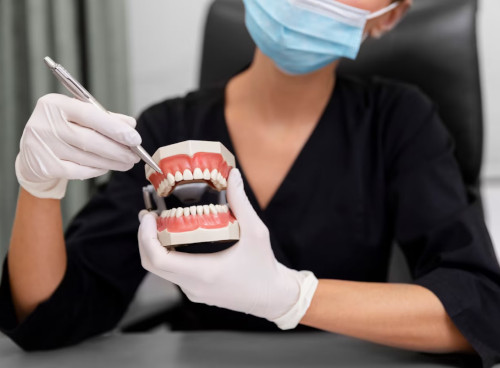Composite restoration of teeth
The K+31 Clinic in Moscow offers composite dental restoration at an affordable price. Restoring a smile with composite inlays has become popular due to the variety of shades, biocompatibility and high quality. Composites demonstrate excellent adhesion to dental tissue, wear resistance and high aesthetic characteristics.

specialists

equipment

treatment
Types of restoration with composite materials
Direct dental restoration
Direct technology involves removing damaged tissue, cleaning and preparing the oral cavity for the use of composite. Then, layer by layer, the material is applied to the tooth and modeled. Each layer hardens under the influence of a polymerization lamp. The procedure allows you to restore shape, color and functionality in one visit.
The following materials can be used during direct restoration:
- Photopolymer fillings. Harden under the influence of light and provide a strong and durable restoration
- Acrylic fillings. They are used less often due to their lower strength, have lower prices
- Epoxy fillings. Provides strength, but is difficult to apply
Direct restoration is prescribed to eliminate caries, small chips and other defects of tooth enamel.
Indirect restoration
An indirect procedure involves the manufacture of restorative elements in a laboratory. Then these elements are fixed in the oral cavity.
Indirect techniques include:
- Inlays. Used for significant damage. Provides high strength and durability.
- Veneers. Improve the aesthetic appearance of a smile and hide damage. Thin overlays are made from individual impressions and then fixed to the front side of the teeth.
An indirect technique requires several visits to the dentist. The first visit includes preparation and taking impressions. The second is the installation of the finished element.
Our doctors guarantee the high quality and durability of the procedures performed. We provide a professional approach and excellent results for each patient.
General information about the procedure

Composite restoration or ceramic veneers?
Doctors of the K+31 clinic believe that the choice between composites and ceramic veneers depends on the specific clinical situation. The method using composites is a fast and budget method that allows you to restore the appearance and functionality of teeth. However, if the patient has old and dark fillings, visible chips, weak enamel, composite restoration is not performed.
Ceramic veneers offer higher aesthetics, durability and reliability. They are created with high precision in a dental laboratory, which ensures an ideal fit and a natural appearance. Veneers require careful preparation and modeling, including the creation of a wax model for preliminary approval by the patient. This method is more expensive, but allows you to get the best result.
According to our specialists, a detailed examination is necessary to accurately select a treatment method. Diagnostics includes an analysis of the condition of the teeth on models, coordination of all stages of work and, if necessary, the manufacture of temporary structures.

Modern methods of diagnostics and dental treatment at "K+31"

This award is given to clinics with the highest ratings according to user ratings, a large number of requests from this site, and in the absence of critical violations.

This award is given to clinics with the highest ratings according to user ratings. It means that the place is known, loved, and definitely worth visiting.

The ProDoctors portal collected 500 thousand reviews, compiled a rating of doctors based on them and awarded the best. We are proud that our doctors are among those awarded.
Make an appointment at a convenient time on the nearest date
Price
Other Services






























































What is composite restoration?